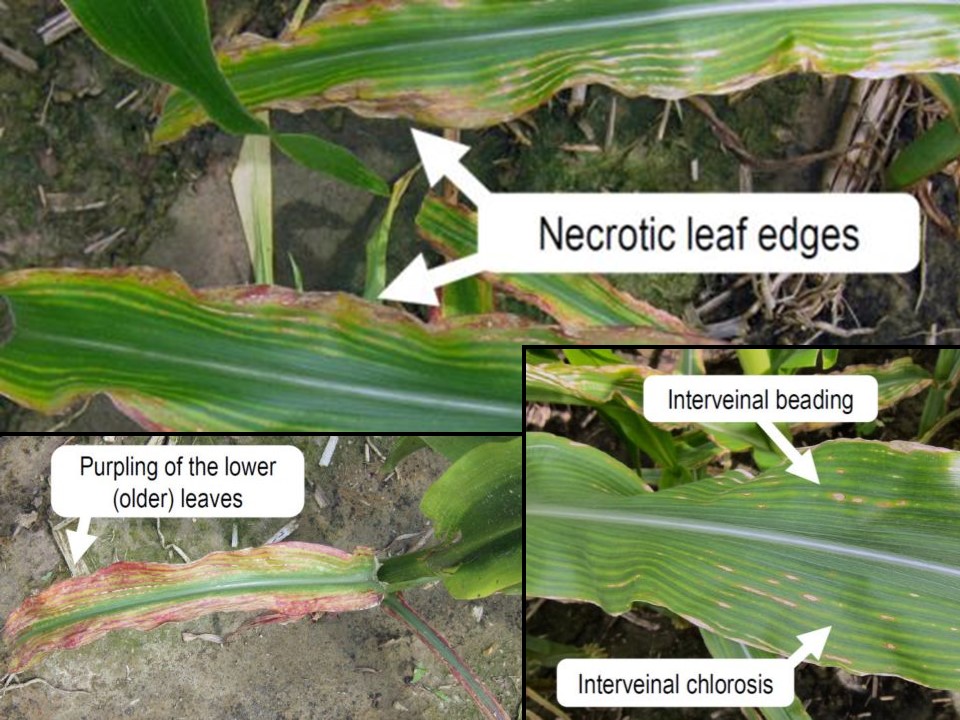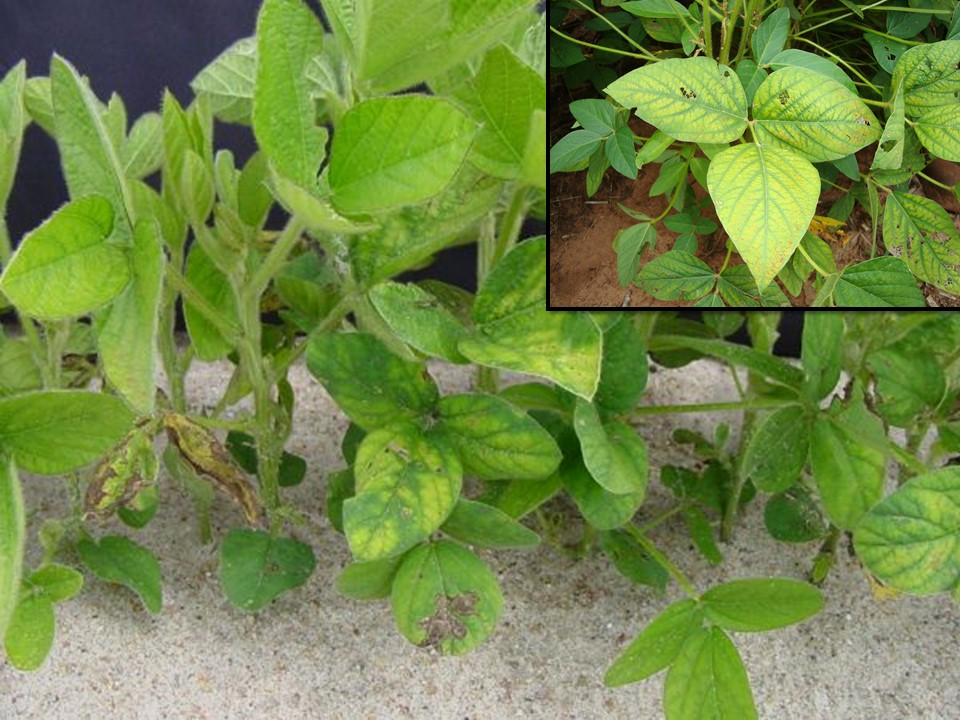| Week 4: Magnesium |
| In this installment in our series on nutrient deficiencies in corn and soybean, this week we take quick look at magnesium: symptomology, sources, and common causes. |
| Magnesium (Mg) is considered to be very mobile in the soil profile when compared to other cations. This is due to its relatively large hydrated radius, making it “less bound” to the soil CEC. However, Mg availability decreases under soil pH 6.5, and significantly decreases under a soil pH of 5.5. Consequently, Mg deficiency in crow crops is rarely observed when the proper pH is maintained for crop productivity.
Magnesium exists in the soil as a cation (Mg+2) and is absorbed by plants from the soil solution, predominantly by mass flow. That is, since Mg+2 is not heavily bound to the CEC, it is free to move through the soil to plant roots. This is in contrast to nutrients that are immobile in the soil (think back to P and K) that require roots to actively move and mine the soil to pull these elements off of the CEC. Magnesium is also mobile in plant tissue, with deficiency symptoms first appearing on older (lower) leaves. As a primary constituent of chlorophyll, Mg2+ is essential in the processes of photosynthesis. It is also required for nearly every process of energy transfer in plant metabolism. |
| Corn |
| Magnesium Deficiency Symptomology
Leaves – Symptoms appear first on older (lower) leaves. Olive green – mustard yellowing & interveinal striping that progresses towards the base of the midrib. Necrosis of leaf tip and margins. Older leaves become reddish-purple. Plant and Leaf Tissue Deficiency Levels Early Growth – recently mature leaf Mg < 0.15%1 At Tassel – recently mature leaf ear leaf Mg < 0.15%1 |

| Soybean |
| Magnesium Deficiency Symptomology
Leaves – Symptoms appear first on older (lower) leaves. Plants will be pale green. Leaves will show yellow interveinal mottling progressing to necrosis. Plant and Leaf Tissue Deficiency Levels Early Growth – recently mature leaf tissue Mg of < 0.30%1. At Flowering – recently mature leaf tissue Mg of < 0.25% 1. |

| Common Magnesium Sources |
Analyses |
||||
| Source |
N |
P | K | S |
Mg |
| Magnesium sulfate |
0 |
0 | 0 | 13 |
10 |
| Sulfate of potash magnesium (K-Mag) |
0 |
0 | 22 | 22 |
11 |
| Magnesium oxide |
0 |
0 | 0 | 0 |
55 |
| Dolomitic lime |
0 |
0 | 0 | 0 |
4-6 |
| Common Causes of Magnesium Deficiency |
| 1. Soils with very high potassium (K) and ammonia levels. |
| 2. Acidic soils (pH < 5.5). |
| Corrective Measures | |
| Early Season | |
| Top dress applications. | |
1Campbell R.A. 2013. Reference Sufficiency Ranges for Plant Analysis in Southern Region of the United States. Southern Cooperative Series Bulletin #394. North Carolina Department of Agriculture and Consumer Services Agronomic Division, Raleigh, NC.


